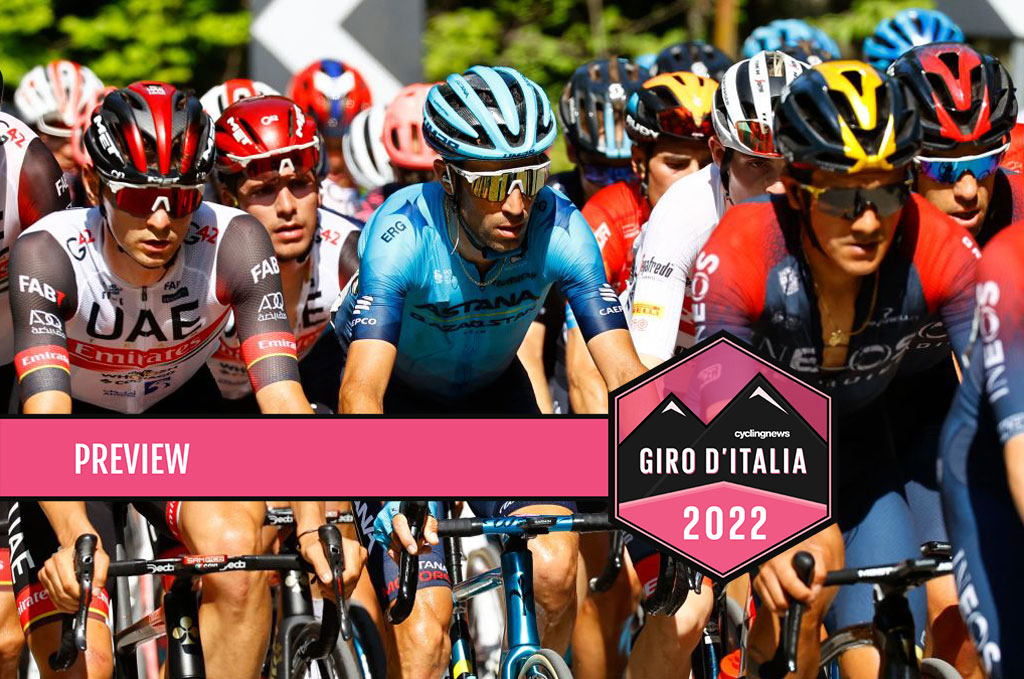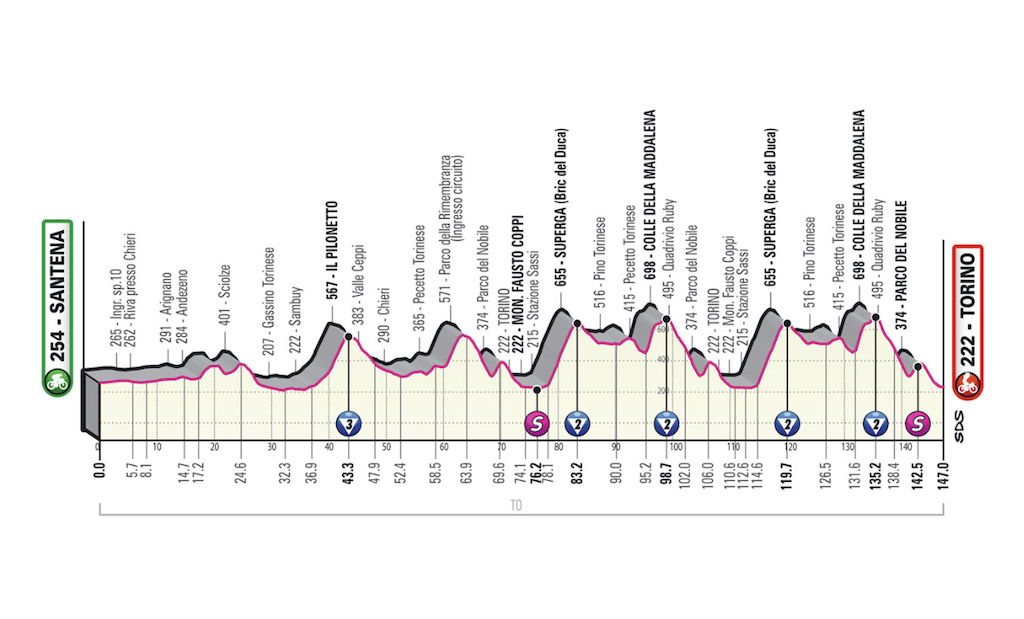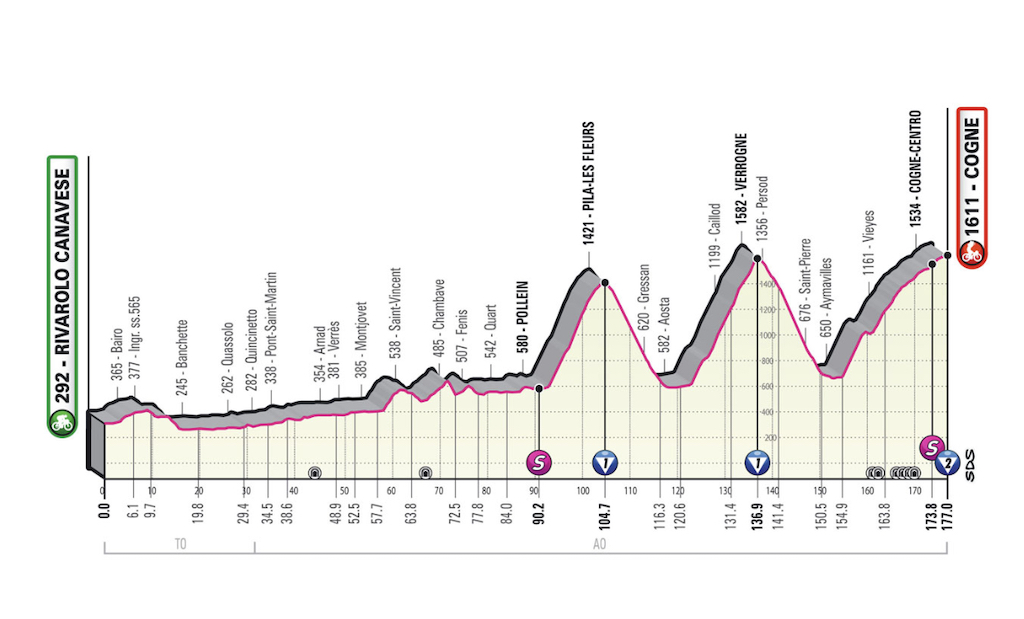'The stage the whole peloton fears' – Giro d'Italia's visit to Turin promises drama
Superga and Colle della Maddelena make for relentless circuit

Among Umberto Eco’s many gifts was a talent for aphorism. “Without Italy, Turin would be more or less the same,” the writer once said. “But without Turin, Italy would be very different.” The formula could just as easily be applied to the 2022 Giro d’Italia, where Saturday’s short but demanding stage around Turin seems destined to make an outsized impact on the entire race.
For two weeks, this Giro has been a race of attrition. Some notable contenders have fallen by the wayside, but the margins remain wafer thin at the head of the overall standings. In a slow burning second week, the only notable change at the head of the general classification has been Romain Bardet’s unexpected abandon on Friday afternoon, and five riders remain locked within 30 seconds of maglia rosa Juan Pedro López (Trek-Segafredo).
That could all change on Saturday’s 147km leg from Santena to Turin, which brings the gruppo on two laps of a relentless, sinuous circuit over the ascents of Superga and the Colle della Maddalena before a plunge to the finish on the banks of the Po.
The brevity of this stage should encourage aggressive racing and might – might – tempt the podium contenders onto the offensive. It would certainly be a surprise if one of their number didn’t suffer a setback here.
“It’s one of the stages that the whole peloton fears the most,” Diego Rosa (Eolo-Kometa) told Cyclingnews. “It’s a strange stage, and I think there’ll be a lot of tension in the bunch on Saturday.”
Rosa, a native of nearby Alba, knows the terrain better than most, given that he claimed the biggest victory of his career when he won Milano-Torino atop Superga in 2015. He politely dismissed the idea that Saturday’s stage offered a challenge equivalent to the venerable classic. “No, it’s a lot harder. And it also comes at the end of the second week of the Giro d’Italia, but with a lot of riders who want to attack.”
Rosa, currently in the maglia azzurra of king of the mountains, is among their number, but he knows the scramble for the early break will be among the most fraught of this entire Giro. Unlike the Neapolitan circuit of a week ago, meanwhile, this stage is tough enough to spark the GC battle into life and fraught enough to make the time limit a pressing concern for the men at the back of the race.
Get The Leadout Newsletter
The latest race content, interviews, features, reviews and expert buying guides, direct to your inbox!
“The sprinters will be worried about the time limit and the GC riders will be nervous because it’s a tough stage with some climbs that are short but very, very hard. They’ll need a team around them to control things and that’s not easy on a stage like this,” Rosa said. “Then for the guys who go in the break, it’s not easy either. There’s no guarantee the break will go the distance, especially if they race behind.”
The lie of the land


López is undoubtedly a rider of considerable potential, but the length of the 24-year-old’s tenure in the maglia rosa tells its own story about this Giro. Since the Blockhaus on Sunday, the route has been devoid of serious obstacles, while the men with designs on wearing pink in Verona have been content to bide their time.
Although Richard Carapaz (Ineos Grenadiers) nabbed some bonus seconds to move up to second overall on Wednesday, the favourites all seem comfortable with the current status quo, with João Almeida (UAE Team Emirates), Jai Hindley (Bora-Hansgrohe), Guillaume Martin (Cofidis) and Mikel Landa (Bahrain Victorious) also within half a minute of López. All the while, Trek-Segafredo hold the responsibility of defending the jersey.
That week-long entente cordiale will surely rupture this weekend. Sunday’s Alpine leg to Cogne is the first full-blown mountain day since the long trek through Abruzzo on stage 9, but the first part of the Piedmont/Val d’Aosta doubleheader might be just as pivotal in the overall picture of the race.
“For sure, everybody knows this stage, and everybody knows that Superga is super hard,” said López, who was coy about his prospects of defending his slender lead atop the overall standings. His 11th day in the maglia rosa might be his last. “Maybe some guys from GC will try to do something, but I’ll do 100% and then we’ll see. And the heat will be a factor too.”
Carapaz, second at 12 seconds, is the man poised to take it from him, but while the Ecuadorian can look after himself on terrain such as this, Sunday’s stage to Cogne is a more obvious fit for Ineos squad’s style of racing. Stage 14, on the other hand, might simply be too unruly for any one team to control. The men at the top of the general classification will have to be prepared, while riders a little further back – Vincenzo Nibali (13th at 3:04), perhaps – might sense an opportunity to sow chaos.
Turin
While Milan doubles as Italian cycling’s de facto capital city, Turin has its own proud cycling heritage, though much of it has been sadly neglected over the years. Renaming the velodrome on Corso Casale in honour of Fausto Coppi could not ensure its preservation as a cycling venue, for instance, while Turin sports daily Tuttosport’s cycling coverage has shrunk markedly since the era of Moser and Saronni, when it jousted fiercely for scoops with La Gazzetta dello Sport.
Turin native Gianni Savio helped to keep the flame alive over the years with his Dronehopper-Androni squad, while the revival of Milano-Torino in 2012 was a sign that the city’s love affair with cycling had not yet extinguished. The route of Saturday’s stage incorporates roads familiar from Italy’s oldest classic.
The stage sets out from Santena, just south of Turin. After a flat opening phase, the road begins to climb ahead of the category 3 ascent of Il Pilonetto (6.4km at 5.4%), which comes after 43km. From that point on, there is barely a moment’s respite, as the race winds towards Turin to tackle two laps of a dizzying 36km circuit that takes in the climbs of Superga and the Colle delle Maddalena.
The Basilica di Superga overlooks Turin and is an emblem of the city. In May 1949, the entire Torino football team lost their lives when the plane carrying them home from a match in Lisbon crashed into the hillside. Il Grande Torino is remembered in a poignant monument behind the Basilica.
The climb of Superga, familiar from the finale of Milano-Torino, averages a stiff 8.6% across its 5km, with the steepest section coming just before the midpoint, while the twisting descent presents its own difficulties. The Colle della Maddalena (3.5km at 8.1%) is shorter, but it is altogether shaper. The first kilometre and a half average 11.6% and the gradient rears all the way up to 20% at the midpoint.
The summit of the Maddalena lies 12km from the finish, but it isn’t the final springboard for attackers. After plunging down the other side, the road rises again for the late intermediate sprint – replete with bonus seconds – at Parco del Nobile, which comes with just 4.5km to go. From there, it’s a sharp descent into the final kilometre before the road sweeps along the Po for a finish on Corso Moncalieri.
“It could be a big battle between the favourites and the GC could explode. Then again, because people fear this stage so much, it could be very controlled, and the favourites might be afraid to play their cards,” Rosa said. “Anything could happen; it all depends on how it’s interpreted.”

Barry Ryan was Head of Features at Cyclingnews. He has covered professional cycling since 2010, reporting from the Tour de France, Giro d’Italia and events from Argentina to Japan. His writing has appeared in The Independent, Procycling and Cycling Plus. He is the author of The Ascent: Sean Kelly, Stephen Roche and the Rise of Irish Cycling’s Golden Generation, published by Gill Books.